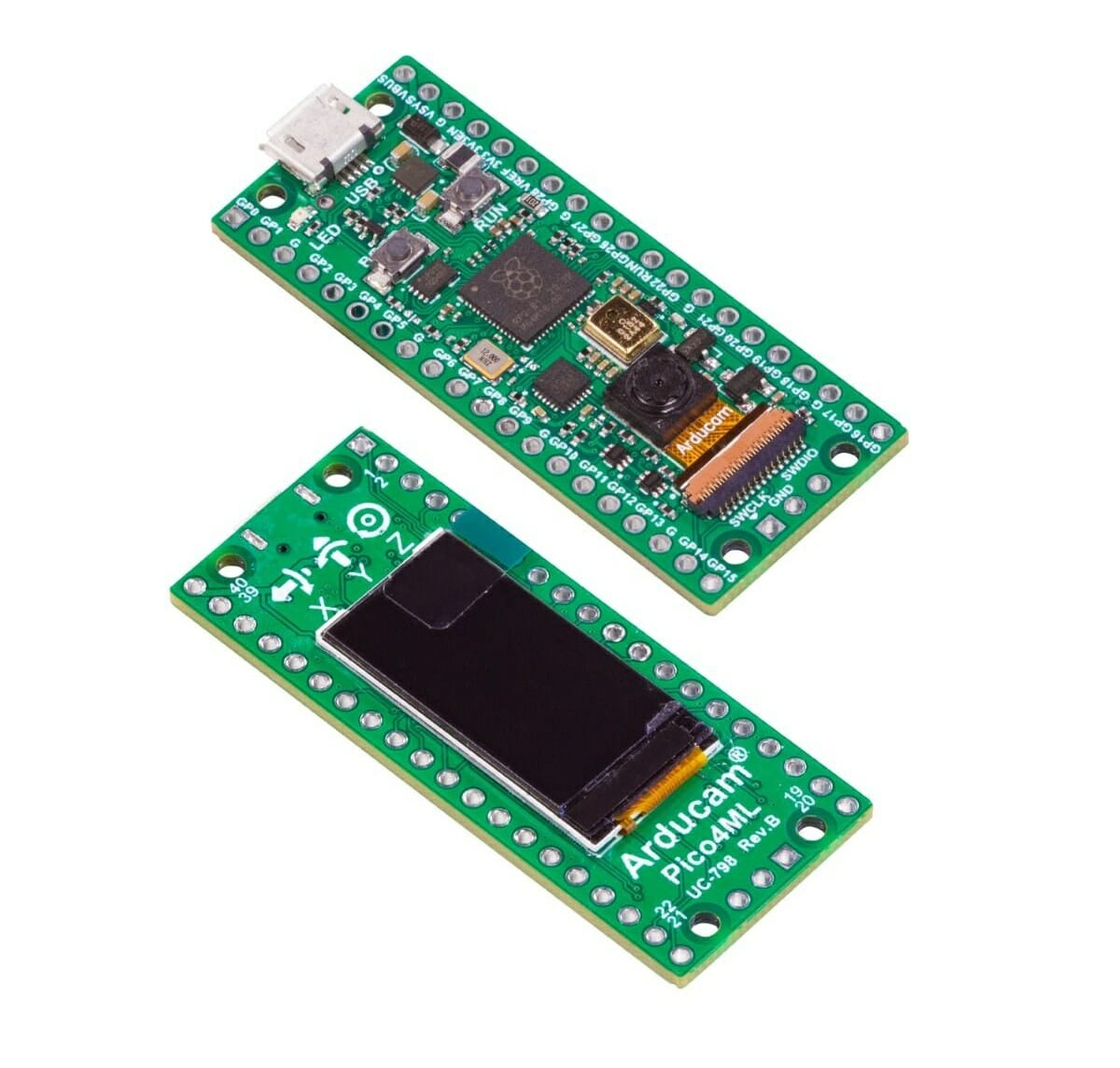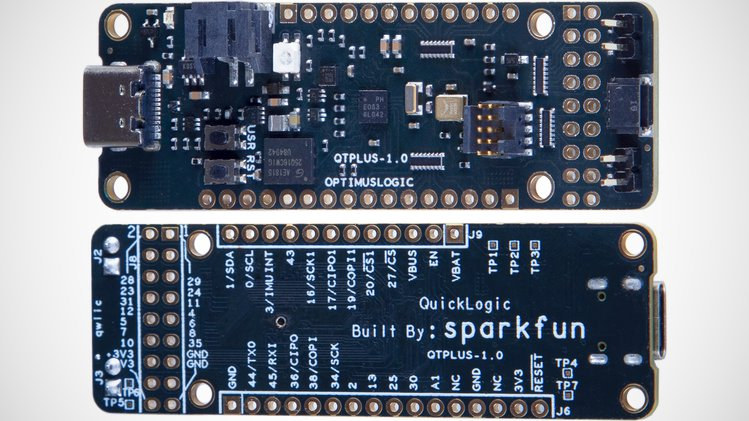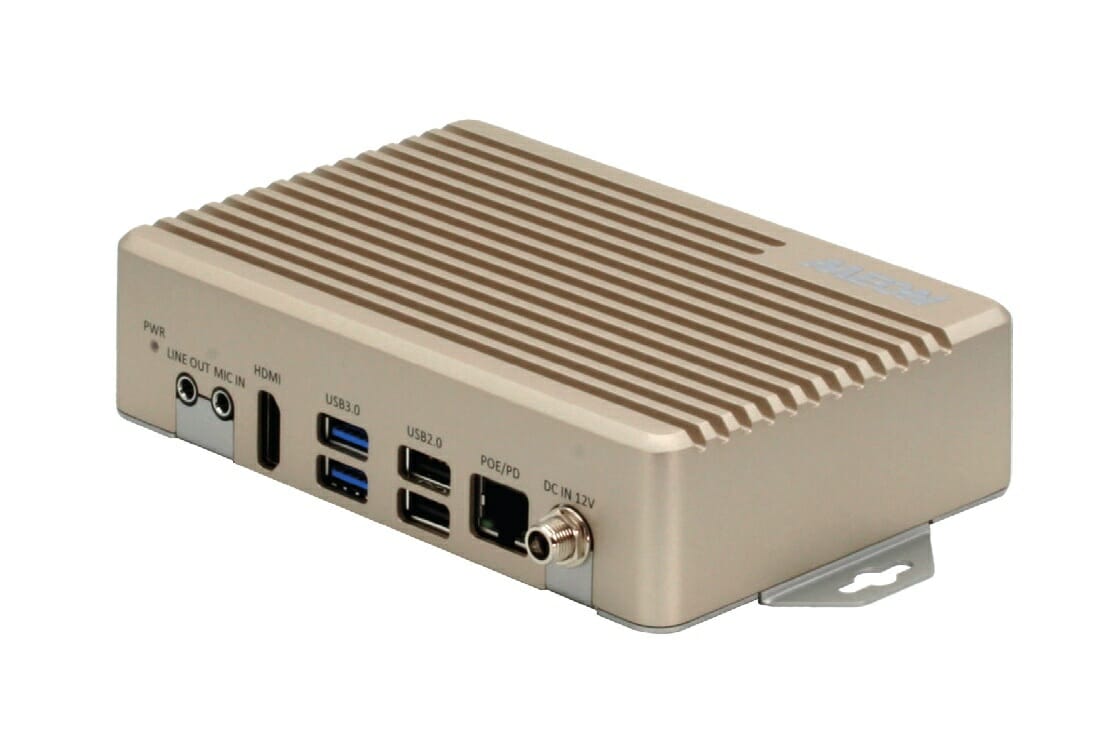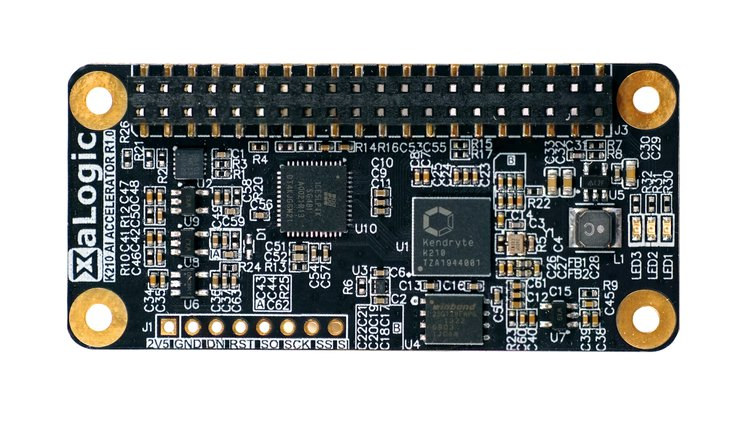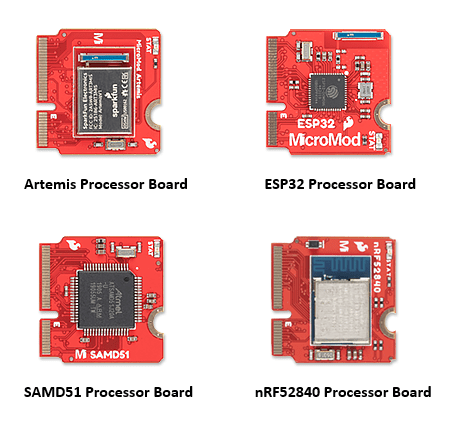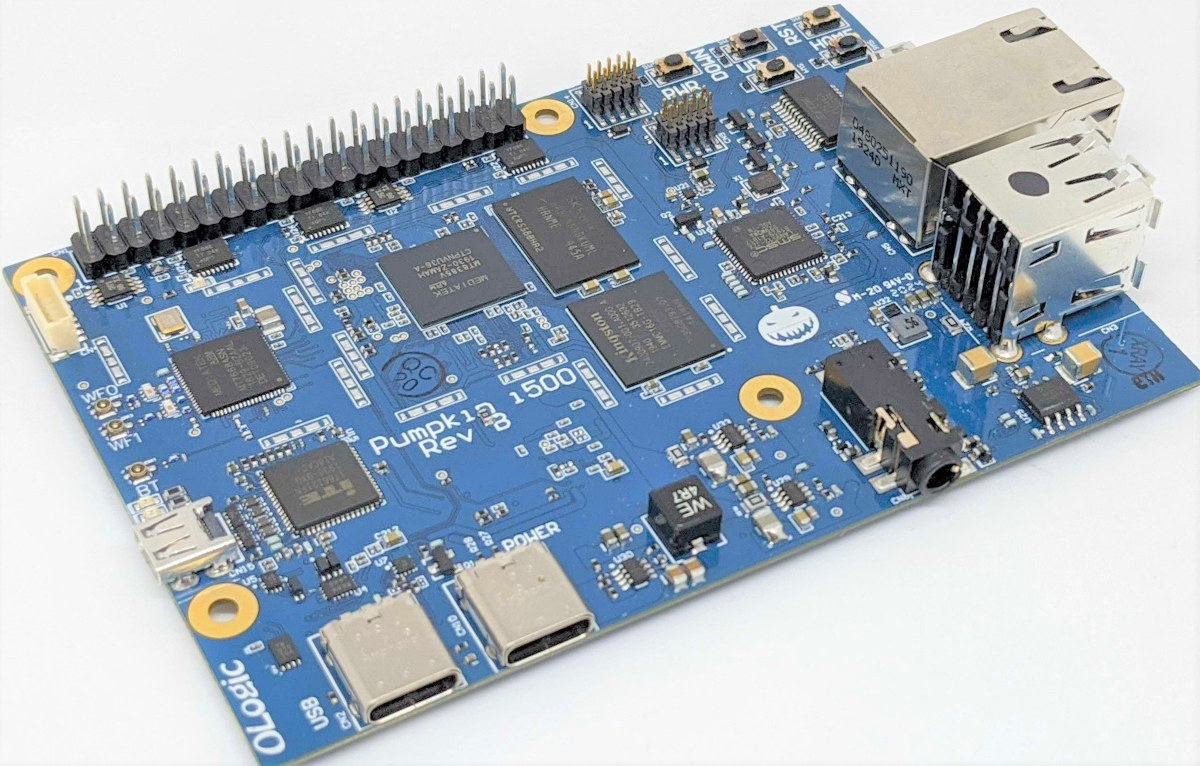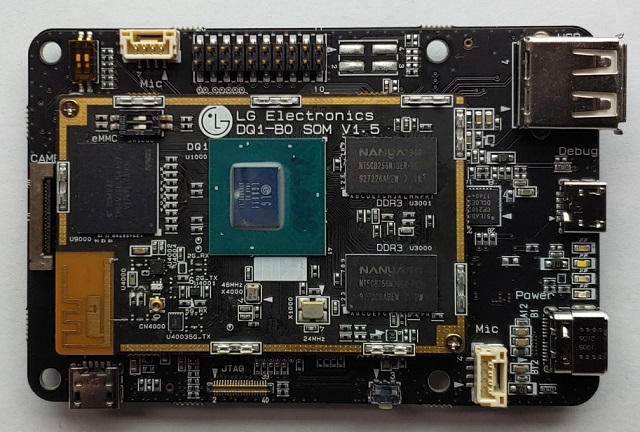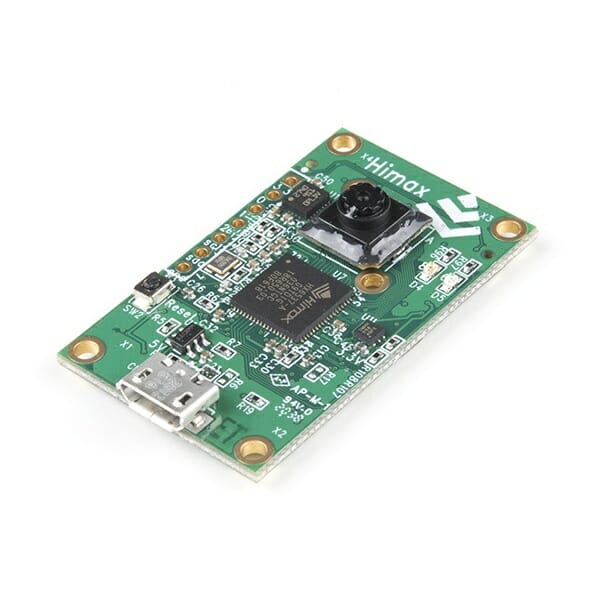A few months ago, ArduCAM demonstrated person detection on Raspberry Pi Pico with Arducam camera using TensorFlow Lite, and later we noted more work was being performed to bring machine learning to RP2040 platforms, notably with the development of Arducam Pico4ML board with a built-in camera and display. At the time, i..e last month, all we had were some renders of the board, but now Arducam Pico4ML pre-orders have launched for $49.99 on UCTRONICS and Tindie stores. Shipping is scheduled to start at the end of the month, so let’s have a closer look. Arducam Pico4ML TinyML devkit specifications: Microcontroller – Raspberry Pi RP2040 dual-core Cortex-M0+ MCU with 264 KB of embedded SRAM Storage – 2MB SPI flash Display – 0.96-inch LCD SPI Display (ST7735) with 160 x 80 resolution Camera – HiMax HM01B0 QVGA camera (320×240 @ 60fps) Audio – Built-in microphone Sensor – IDK ICM-20948 9-axis IMU (gyroscope, […]
Sparkfun Thing Plus – Quicklogic EOS S3 Arm eFPGA board launched in Crowd Supply
SparkFun Electronics is a well-known electronics retailer that usually sells its in-house developed or third-party boards through its own online store. But this time around, the company decided to launch “Sparkfun Thing Plus – Quicklogic EOS S3” through Crowd Supply crowdfunding platform. The board is based on QuickFeather board designed with the same Quicklogic EOS S3 Arm Cortex-M4 plus embedded FPGA SoC, but follows Sparkfun’s Thing Plus form factor with a Qwiic connector and a different mix of sensors. Sparkfun Thing Plus – Quicklogic EOS S3 (QTPLUS-1.0) board specifications: SoC – QuickLogic EOS S3 MCU + eFPGA SoC with Arm Cortex-M4F Microcontroller up to 80 MHz, up to 512 Kb SRAM, and an embedded FPGA (eFPGA) with 2400 effective logic cells, 64 Kb RAM Storage – 16 Mbit SPI NOR flash (GigaDevice GD25Q16CEIGR) Sensors STMicro LIS2DH12TR accelerometer Digital pulse density modulation (PDM) microphone with Wake-on-Sound (WoS) feature: Vesper VM3011-U1 Expansion […]
PoE powered AI Edge computer combines NXP i.MX 8M SoC with Google Edge TPU
AAEON has introduced several BOXER AI edge computers over the years either powered by an NVIDIA Jetson module, a HiSilicon HI3559A Arm SoC, or an Intel processor combined with Movidius Myriad AI accelerator. The latest model, BOXER-8521AI, combines an NXP i.MX 8M SoC with Google Edge TPU AI accelerator, and offers 1GB RAM, USB ports, a 40-pin external I/O connector, and 12V or PoE power inputs. AAEON BOXER-8521AI specifications: SoC – NXP i.MX 8M SoC quad-core Cortex-A53 processor with Cortex-M4F real-time core, 2D/3D GPUs AI Accelerator – Google Edge TPU ML accelerator coprocessor System Memory – 1GB LPDDR4x RAM Storage – 8GB eMMC flash, MicroSD card slot Video Output – 1x HDMI 2.0a port Audio – 1x Mic-in, 1x Line-out, optional 2x MEMS microphones Connectivity Gigabit Ethernet RJ45 port with PoE (802.3at) Optional? WiFi 2×2 MIMO (802.11b/g/n/ac 2.4/5GHz) & Bluetooth 4.1 plus two antennas USB – 2x USB3.2 Gen 1 […]
K210 AI Accelerator Raspberry Pi pHAT targets secure AIoT projects (Crowdfunding)
Kendryte K210 is a dual-core RISC-V AI processor that was launched in 2018 and found in several smart audio and computer vision solutions. We previously wrote a Getting Started Guide for Grove AI HAT for Raspberry Pi using Arduino and MicroPython, and XaLogic XAPIZ3500 offered an even more compact K210 solution as a Raspberry pi pHAT with Raspberry Pi Zero form factor. The company is now back with another revision of the board called “XaLogic K210 AI accelerator” designed to work with Raspberry Pi Zero and larger boards with the 40-pin connector. K210 AI Accelerator board specifications: SoC – Kendryte K210 dual-core 64-bit RISC-V processor @ 400 MHz with 8MB on-chip RAM, various low-power AI accelerators delivering up to 0.5 TOPS, Host Interface – 40-pin Raspberry Pi header using: SPI @ 40 MHz via Lattice iCE40 FPGA I2C, UART, JTAG, GPIOs signals Security Infineon Trust-M cloud security chip 128-bit AES […]
MicroMod modular ecosystem offers M.2 microcontrollers cards and carrier boards
MicroMod is a modular interface ecosystem for quick embedded development and prototyping. MicroMod comes with two components, that is a microcontroller “processor board” and a carrier board. PC industry’s M.2 connector is the interface between these two components. The carrier boards are for the usage of various peripherals and the processor board act as the brain of the application system. MicroMod processor board has a dimension of 22×22 mm that can be easily fitted on the carrier boards. Although, the original M.2 standard was dedicated to swapping out peripherals where a user could swap one component with the other one. The MicroMod standard is for swapping out microcontrollers according to the functional and application requirements. MicroMod Processor Boards Artemis Processor Board comes with an Ambiq Apollo 3 Blue Arm Cortex-M4F with BLE 5.0 running up to 96MHz and a power rating of less than 5mW. It also supports the TensorFlow […]
Pumpkin i500 SBC uses MediaTek i500 AIoT SoC for computer vision and AI Edge computing
MediaTek Rich IoT SDK v20.0 was released at the beginning of the year together with the announcement of Pumpkin i500 SBC with very few details except it would be powered by MediaTek i500 octa-core Cortex-A73/A55 processor and designed to support computer vision and AI Edge Computing. Pumpkin i500 hardware evaluation kit was initially scheduled to launch in February 2020, but it took much longer, and Seeed Studio has only just listed the board for $299.00. We also now know the full specifications for Pumpkin i500 SBC: SoC – MediaTek i500 octa-core processor with four Arm Cortex-A73 cores at up to 2.0 GHz and four Cortex-A53 cores, an Arm Mali-G72 MP3 GPU, and dual-core Tensilica Vision P6 DSP/AI accelerator @ 525 MHz System Memory – 2GB LPDDR4 Storage – 16GB eMMC flash Display – 4-lane MIPI DSI connector Camera – Up to 25MP via MIPI CSI connector Video Decoding – 1080p60 […]
LG launches LG8111 AI SoC and development board for Edge AI processing
LG Electronics has designed LG8111 AI SoC for on-device AI inference and introduced the Eris Reference Board based on the processor. The chip supports hardware processing in artificial intelligence functions such as video, voice, and control intelligence. LG8111 AI development board is capable of implementing neural networks for deep learning specific algorithms due to its integrated “LG-Specific AI Processor.” Also, the low power and the low latency feature of the chip enhances its self-learning capacity. This enables the products with LG8111 AI chip to implement “On-Device AI.” Components and Features of the LG8111 AI SoC LG Neural engine, the AI accelerator has an extensive architecture for “On-Device” Inference/Leaning with its support on TensorFlow, TensorFlow Lite, and Caffe. The CPU of the board comes with four Arm Cortex A53 cores clocked at 1.0 GHz, with an L1 cache size of 32KB and an L2 cache size of 1MB. The CPU also […]
Himax WE-I Plus EVB AI development board supports TFLite for microcontrollers
Himax WE-I Plus EVB is a low-power AI development board focused on machine learning and deep learning applications with its support for the TensorFlow Lite framework for Microcontrollers. It consists of majorly two significant components. First, HX6537-A ASIC is an ultra-low-power microcontroller designed for battery-powered TinyML applications. Second, HM0360 VGA mono camera with ultra-low power and CMOS image sensing features for CV(Computer Vision) based applications like object classification and recognition. The All in One AI Development Board The Development Board consists of HX6537-A ASIC, with built-in ARC EM9D DSP working at 400MHz frequency. It contains internal 2MB ultra-low leakage SRAMs for system and program usage. It also contains two LEDs to display classification results. Connections with external sensors/devices can be established using I2C and GPIOs interface present in its expansion header. “The all-in-one WE-I Plus EVB includes an AI processor, HM0360 AoS VGA camera, 2 microphones, and a 3-axis accelerometer […]


